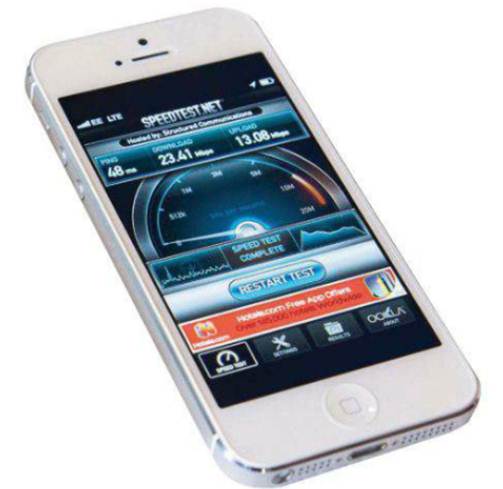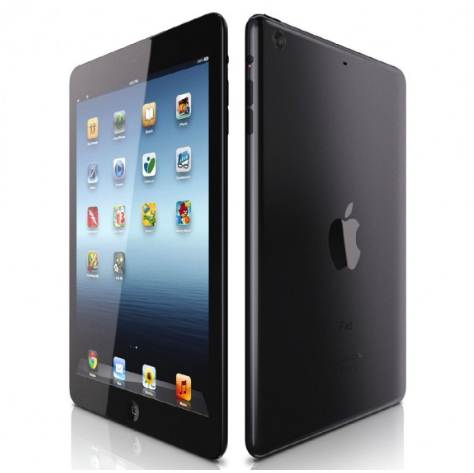4G coverage in the UK
EE provides 4G in 16 UK cities, with some 20 million users
able to access the faster network. The lucky cities include Birmingham,
Bristol, Cardiff, Edinburgh, Glasgow, Leeds, Liverpool, London, Manchester,
Sheffield, Belfast, Derby, Hull, Nottingham, Newcastle and Southampton. Twelve
of these have wide-ranging coverage. London 4G’s signal will stretch beyond the
M25, for example.
Don’t make the mistake of assuming that if you have decent
3G coverage now you will also get good 4G coverage when the network launches in
your area.
Independent regulator Ofcom has set a requirement that 98
percent of the UK must have 4G coverage by the end of 2017. However, EE has
promised the fastest ever rollout of a mobile network in the UK, claiming it
will reach 70 percent coverage by the end of 2013. It also says 98 percent of
the UK will be able to access 4G by the end of 2014, three years
ahead of Ofcom’s goal.

Only the
fourth-gen iPad and iPad mini natively support 4G in the UK
You can check 4G coverage in your area on EE’s website:
ee.co.uk/coverage.
4G tariffs
There has been, and remains, a lot of aggro between the UK’s
mobile operators and Ofcom over 4G. EE was the first operator to launch its 4G
network. Until other operators are allowed to roll out their own 4G networks,
EE will have a monopoly on the market.
The process of setting up a 4G network is complicated and
involves plenty of red tape, so it will be a while before there’s a choice of
4G operators.
Ofcom is auctioning off 800MHz and 2,600MHz spectrums to be
used for 4G: 02 and Vodafone will be the main bidders. Once this process is
complete, networks are expected to roll out from spring 2013.
Ofcom allowed EE to launch a 4G network ahead of its competitors
because it already owned 1,800MHz spectrum that it could use for 4G services.
Ofcom also wanted 4G to be available in the UK as soon as possible.
Three has made an agreement with EE to use parts of the
1,800MHz spectrum for 4G, but it won’t be able to so until the latter part of
2013 when it gains approval.
Virgin Media is negotiating with EE to launch 4G tariffs.
Since Virgin is a ’virtual’ operator, and already uses EE’s network for 3G, it
hopes to piggyback on EE’s 4G.
Orange and T-Mobile are owned by EE and won’t be going
anywhere. All three operators will use the EE network, and users will begin to
see ‘EE’ displayed on their devices. However, this doesn’t mean you’re getting
4G. Existing Orange and T-Mobile customers must switch to EE to gain 4G
services. It’s free to move, but users will need to sign an 18- or 24-month
contract of the same or higher value than their current tariff. A 4G SIM will
be provided for free.

We recorded
download speeds up to 41 Mbps and 14.3 Mbps uploads ahead of EE’s official
launch
EE’s 4G tariff starts at $54 per month for 500MB of data,
rising to a maximum 8GB for $84. Unlimited calls and text messages are included
with all plans.
Which devices support 4G?
Only the fourth-generation iPad and iPad mini tablets support
4G in the UK, although a handful of smartphones, including the Apple iPhone 5,
HTC One XL, Huawei Ascend PI LTE, Samsung Galaxy Note II and S III LTE, Nokia
Lumia 820 and 920 LTE, which means you may be able to tether your smartphone to
your tablet to take advantage of the faster connection.

Only the
fourth-generation iPad and iPad mini tablets support 4G in the UK
An alternative is to buy a 4G mobile hotspot, such as the
Huawei E589 Mobile Wi-Fi or Huawei E392 MBB Stick. You can insert a 4G SIM then
wirelessly share its faster connection with a smartphone, tablet, laptop or PC.
A drawback is you’ll need to sign up for a second tariff.
If you’re about to buy a new mobile device, it’s critical
that you check with which 4G networks it is compatible. Some might claim to be
‘4G-ready’, yet not be compatible with UK 4G networks.
Testing
Theoretically, 4G can offer download speeds up to 100Mbps
and upload speeds of 50Mbps. We were able to test EE’s 4G network in central
London prior to its official switch-on.
The fastest download speed we achieved on an iPhone 5,
according to SpeedTest.net, was 4IMbps.The fastest upload was 14.3Mbps.
Both figures are seriously impressive, but we saw wildly
different results as we repeated the test with different smartphones.
We were able to run tests on a Samsung Galaxy S3 LTE, Huawei
Ascend PI LTE and HTC One XL. The average speeds achieved across nearly 20
tests were 26.4Mbps download and 14.2Mbps upload.
In our side-by-side test with 3G, the 4G network was more
than three times faster for downloads and 10 times faster for uploads.
Our results show a best-case scenario, with few devices
competing for bandwidth and an optimum location.
Download speeds and population coverage
|
Technology
|
Typical av. speed
|
Typical max speed
|
Peak speed
|
Headline speed
|
UK population coverage
|
|
4G LTE
|
8-12Mbps
|
40Mbps
|
64Mbps
|
100Mbps
|
34%
|
|
3G (DC-HSPA+)
|
3Mbps
|
6-8Mbps
|
26Mbps
|
42Mbps
|
40%
|
|
3G (HSPA+)
|
3Mbps
|
6-8Mbps
|
26Mbps
|
42Mbps
|
95%
|
|
3G
|
3Mbps
|
6-8Mbps
|
26Mbps
|
42Mbps
|
98%
|
|
2G
|
Voice & text
|
Voice & text
|
Voice & text
|
Voice & text
|
99%
|
|
Fibre broadband
|
58.5Mbps
|
76Mbps
|
80Mbps
|
80Mbps
|
11.4m homes & offices
|
|
Broadband (ADSL)
|
5.9Mbps
|
14Mbps
|
24Mbps
|
24Mbps
|
95%
|